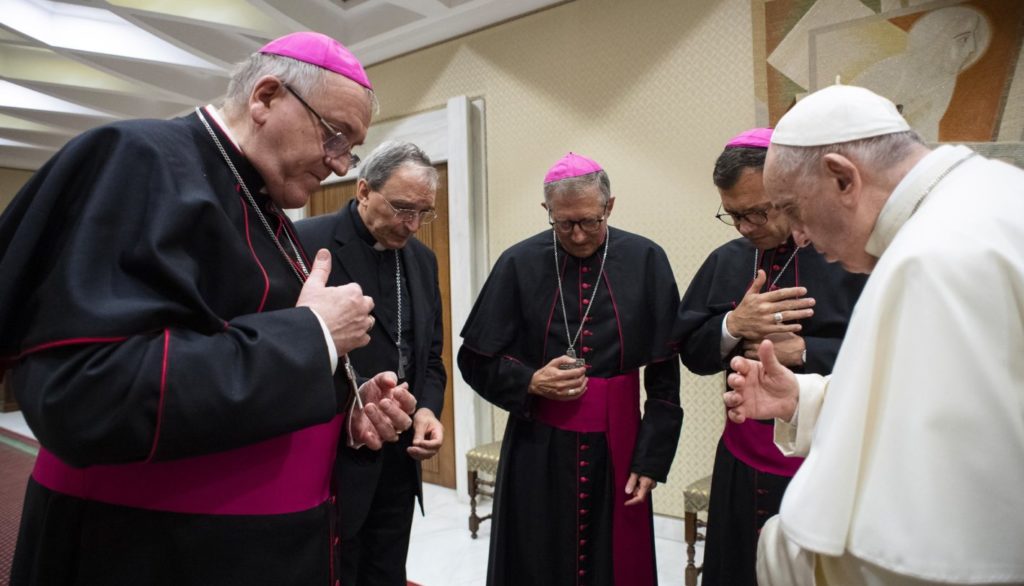Three years ago, the Catholic bishops of France asked Jean-Marc Sauvé, 72, former vice-president of the Council of State, to chair a commission to study the sexual abuse of minors by members of the clergy. They asked him to help them understand the magnitude of the phenomenon from 1950 to 2020, its main causes, but also to make recommendations to ensure that these scandals are not repeated. The commission is called the Independent Commission on Sexual Abuse in the Church (CIASE). It has been funded by the Church with three million euros.
Some twenty experts in various disciplines (psychiatry, sociology, history, medicine, law) collaborated with Jean-Marc Sauvé on this study, which was made public on Tuesday, October 5.
In the world, only the Catholic Churches of the United States, Ireland, Germany, Australia and the Netherlands have already conducted such surveys.
Initially, the commission made a general call for testimonies in the various French cities, which led to the identification of 2,700 victims. 243 were attentively questioned; 2819 letters received recounting the grievances they had suffered were studied. A victimological survey was elaborated on the basis of 1628 concrete cases. On the other hand, the evaluation of the ecclesiastical archives concluded to the existence of 4500 victims. According to M. Sauvé (cfr La vie5 October 2021) the frightening surprise came from the conclusions of the National Institute of Health and Medical Research (Inserm) based on a survey conducted by Ifop (a benchmark institute for surveys and market research) on a representative sample of 28,000 people.
According to this study, 216,000 minors were victims of sexual abuse by priests, religious men and women in the period from 1950 to 2020. If the study is extended to lay personnel working in Church-related structures, the estimated number of abused minors is set at 330,000. According to the conclusions of this study, more than one third of the abuses of the overall figure would have been committed by lay people.
A crucial point is the counting method. Only 1,25% of the victims spoke out to Ciase. It is important to know that many victims do not speak out. Because they do not want to, because they want to turn the page, because they fear that their testimony will trigger a judicial investigation or simply because they have not identified the nature of what they have experienced (especially in the case of non-penetrative sexual assaults).
The Inserm study, which is national in scope, also estimates that 5.5 million people in France have been sexually abused before reaching the age of majority. Sexual violence committed in the Church would thus represent 4% of the total violence of this type in French society, on average between 1950 and 2020.
The majority of assaults in the Church, 56%, occurred between 1950 and 1970; 22% between 1970 and 1990; and 22% between 1990 and 2020. This data disproves the widely held view that the origin of abuse derives from the sexual liberation promoted in May '68. It also appears that the ratio of abuse in the Church to sexual abuse of minors in society has declined considerably. It was 8% between 1950 and 1970, dropped to 2.5% between 1970 and 1990, and is 2% between 1990 and 2020.
The cross-checking of different available sources has allowed Ciase to estimate the number of predator priests by approximately 3,000. The figure ranges between 2,900 and 3,900 priests and religious, over 70 years of studies. That is, a percentage between 2.5% and 2.8% of the priests then in practice, 115,500 clerics. But again, the study covers three quarters of a century and this figure is an average for this period. This data would lead to the conclusion of an average of more than 60 victims per abusing priest, although the difference between the "compulsive" and the "occasional" is recognized. Significantly, the report states that in the Church 80% of the victims are boys between 10 and 13 years of age and 20% are girls. While in society, 75% of victims are girls and 25% are boys.
Another characteristic is that the average duration of abuse was longer in ecclesiastical environments than in other social contexts (several months or even several years).
The commission traces the historical sequence of the evolution of the Catholic Church in the face of aggressions committed in its midst. From 1950 to 1970, the Church was dominated by the desire to protect itself from scandal while trying to "save" the aggressors and concealing the fate of the victims, who were invited to remain silent. Between 1970 and 1990, the issue of sexual violence took a back seat to the priestly crisis, which took over the internal structures of care for priests "with problems". From the 1990s onwards, the attitude of the Catholic Church gradually changed, taking into account the existence of victims, although they were not fully recognized. This recognition came in the 2010s, with the multiplication of complaints to justice, canonical sanctions and the renunciation of purely internal treatment of the aggressors.
The Commission denounces the concealment, relativization or denial of the abuses by the ecclesiastical authority and a serious deficiency in the prevention and legal treatment of the crimes.
The study conducted by Inserm identifies the reality of sexual abuse in French society as a massive phenomenon, as in many other countries, and regrets the social and political concealment of this reality. One French person in ten is a victim of sexual violence in childhood. A new independent commission on incest and sexual violence against children (Ciivise) has taken over from Ciase to extend the study to all areas of French society. "Sexual violence, says M. Sauvé, is a fragmentation bomb in our society: if the Catholic Church is today at the forefront, public and private institutions will not be able to avoid the necessary examination of conscience to answer for their actions or their abstention." The transparency of the Church will be able to teach the path of truth and purification to all other institutions.








